I returned to Windows 10 Mobile and the HP Elite x3 — here's what I learned
I've missed Windows 10 Mobile since I left the platform last year, so I went back to see how it's holding up. Here's my experience using the HP Elite x3 during the last few weeks.
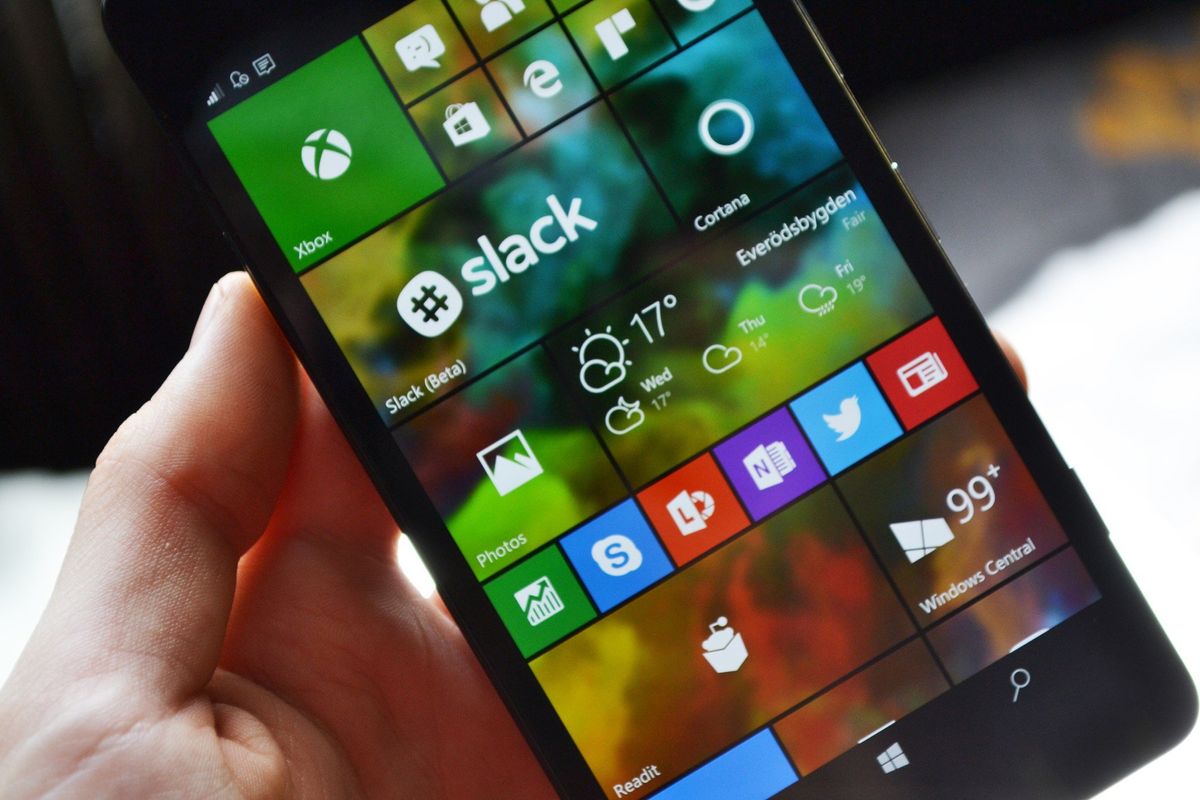
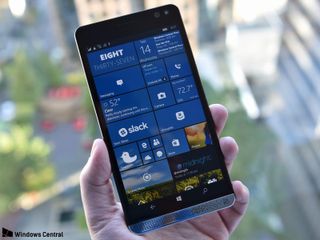
For the longest time, I was a Windows phone user. I used Windows Mobile devices, and I used Windows Phone devices. I flirted with iOS and Android devices through the years, but at the end of the day, I'd always return to a Windows-based phone. That was, until, Microsoft announced that it was no longer planning to continue work on its mobile platform.
The mobile device you choose to carry is a significant choice in modern life. It's the bit of tech you choose to bring with you everywhere you go; that you trust will keep you connected and safe, and is there for you if you get lost, stranded, or worse.
The mobile platform I chose was put to bed last year, with no new hardware or software features planned. As such, when Microsoft's Corporate Vice President of Windows 10, Joe Belfiore, confirmed that Windows 10 Mobile was no longer of "focus" to Microsoft, I threw in the towel. I've used both iOS and Android devices since then, and I can't say I've found my new home yet. Nothing I've used has been a full-time replacement for my Windows phones.
So, after over a year of hunting for my next true mobile companion, I've temporarily given up the search to go back "home." I jokingly called this Windows 10 Mobile's last voyage, but in a funny way, it's true. Outside of security updates, Windows 10 Mobile is no longer being maintained, meaning there are some issues that are starting to arise.
Returning to Windows 10 Mobile

I was initially planning to return to Windows 10 Mobile with Microsoft's first, and last, smartphone flagship: the Lumia 950 XL. Released in 2015, the Lumia 950 XL is a 5.7-inch phone with a Snapdragon 810, 3GB RAM, and a 20MP camera, which was excellent. These specs were more than fine for a 2015 flagship, but in 2018, it's ... not.
The reason I didn't stick with the Lumia 950 XL on my final voyage was because of the battery. I'm not sure when it happened, but one of the cumulative updates for Windows 10 Mobile released in the last year has severely degraded battery life on the platform as a whole. Everything from the Wileyfox Pro to the Alcatel Idol 4 Pro is suffering from terrible battery life for me.
The Lumia 950 XL wasn't able to get me through a day. I ordered a new battery to see if that'd fix the problem, but it didn't. The Wileyfox Pro, which I assume was manufactured within the last year, also suffers from poor battery life. So it's not aging batteries that are causing these battery issues.
Get the Windows Central Newsletter
All the latest news, reviews, and guides for Windows and Xbox diehards.
If I was going to be relying on this phone as my primary device, I needed it to last a full day. So, I switched on the HP Elite x3. Now, when we first reviewed this Windows phone back in 2016, it was a two-day phone. In 2018, it's a one day phone, thanks to these apparent battery issues going on with Windows 10 Mobile.
HP Elite x3 in 2018
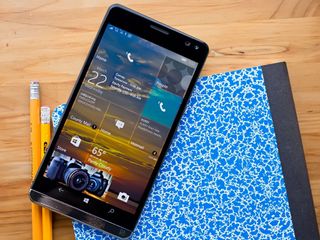
I honestly forgot how great a phone the HP Elite x3 is. When it launched in 2016, it did so with many issues surrounding its not so great camera, and a Windows 10 Mobile that was still pretty buggy. It wasn't until the Windows 10 Mobile Anniversary Update that the HP Elite x3 became a usable phone. It was a true flagship with everything to offer.
Featuring a 6-inch 1440p OLED display, a massive 4000mAh battery, a Snapdragon 820 processor, both fingerprint and iris recognition for security, and front-facing speakers, this was a 2016 flagship in its truest form. Most of what the Elite x3 offered in 2016 still holds up today in 2018. Its screen is absolutely gorgeous, rivaling that of most flagship displays available in 2018.
Even little stuff like its haptic feedback motor is fantastic. It's the tightest, cleanest vibration motor on a Windows phone and is even better than most Android phones I've tried in the last year. But it's still nowhere near as good as the iPhone.
Some things just don't hold up in 2018, however, mainly with that camera. In the last two years, smartphone cameras have improved two-fold, and the HP Elite x3's camera was not superb even when it launched. It takes OK photos in ideal scenarios, but low-light photography is a rough time, and the camera app itself is just slow compared to the latest iPhone and Android devices.
The fingerprint and iris scanner are also two parts of the phone that don't hold up in 2018. The fingerprint reader especially is the slowest fingerprint reader that has ever existed on a smartphone. The fingerprint module is no different from what other flagship makers were using in 2016, but for some reason, the OS is just so slow at picking it up and logging you in.
Overall, I think for the most part the Elite x3 still holds up for me in 2018. I love its design and hardware, and while the Snapdragon 820 is a little old now, it's still competent.
Windows 10 Mobile in 2018
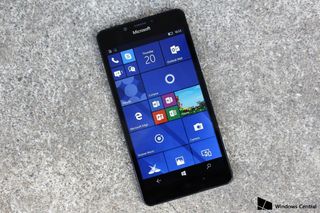
I've been using the HP Elite x3 and Windows 10 Mobile for a few weeks now, and I'm happy I went back. It's been awesome coming back to this platform and remembering why I chose it. The Start Screen is still a fresh take on what phone home screens can be, and it's super awesome being able to use the same apps on your PC directly on your phone.
I'm already using many universal Windows Platform (UWP) apps on my PC, and it's great to able to use those same apps on the go too. Outlook Mail, Microsoft To-Do, Edge, even Twitter, are the same across PC and phone. The Microsoft Store has also been updated with the new design on phones that lets you install apps on your other devices, so when I'm out I can tell the Store to install an app on my PC or vice versa.
There are some issues, but overall, I've been loving going back to using UWP apps on the go with Windows 10 Mobile. Using your Microsoft Account, many apps will sync your sign-in data from your PC to your phone, meaning apps like myTube and Readit won't ask you to log in again if you've already done it before.
I also really like how Cortana still syncs your notifications to your PC, meaning I don't have to look at my phone every time a notification comes through. For some reason, Microsoft is removing this feature from the Cortana app on Android and iOS, and it's something I really miss.
The Insider Program is still active, and while it doesn't provide new Insider Preview builds anymore, it does give you access to Insider versions of UWP apps in the Store, assuming they still run on Windows 10 Mobile.
The Office Mobile apps are still excellent lightweight versions of Office for mobile phones. I even use these apps on my PCs. OneNote is still fantastic and remains up to date, as does Microsoft's new To Do app which has an excellent UWP app that works just fine on mobile.
It's not all roses
Windows 10 Mobile in 2018 is by no means a perfect experience, and I'd argue it's gotten worse since last year. Windows 10 Mobile is now in a state where no one is really maintaining it. Microsoft is only servicing Windows 10 Mobile with security updates, meaning it's rare to see any actual Windows 10 Mobile-specific bugs be fixed in the monthly patches.
I've also noticed that some of Microsoft's UWP apps now aren't always focused on ensuring that experience works well on Mobile. The most notable of which is the new Microsoft Store app, which now requires you to tap on an arrow to navigate through categories, rather than swiping through them, which is much more natural. It's also worth noting that any app that uses any real Fluent Design effects is usually pretty laggy.
A bigger issue with Windows 10 Mobile in 2018 is the lack of apps, which is only going to get worse as old Windows Phone 8 apps are pulled or stop working, and as UWP apps move on to support newer versions of Windows 10. Progressive Web Apps (PWAs) do run on Windows 10 Mobile, albeit very poorly. This is because Microsoft's implementation of PWA support on Windows 10 Mobile was never finished.
PWA also doesn't support service workers on mobile, meaning things like push notifications don't work on the platform. As such, apps like Twitter won't inform you when you receive a new tweet or message. PWAs on mobile also eat battery life like no other app I've ever seen, meaning if you're a heavy user of Twitter, Windows 10 Mobile is a rough place to be now.
Spotify is dog-awful and shouldn't be used at all. It's a slow mess that isn't even supported technically. It still works but is very buggy. On the flipside-ish, Slack is an app on Windows 10 Mobile that still works great, is fast, smooth, and functions as it should. Slack has abandoned its Windows Phone app too, but at least their app works well. Unlike Spotify.
The Instagram app on Windows 10 Mobile is a very mixed bag. It's a perfectly capable app if you don't use Instagram Stories, but the Instagram Stories feature itself is a total mess. It's laggy, slow, and basically unusable.
Edge is still pretty great, but it's not without some really frustrating issues; primarily the issue which sees the keyboard stop working when tapping on text boxes like the Google Search box.
Cortana on Windows 10 Mobile has more or less been left behind. It's still using the old Notebook design and hasn't been updated with any of the Timeline specific features added in the recent Windows 10 updates on PCs.
Final thoughts on my final voyage
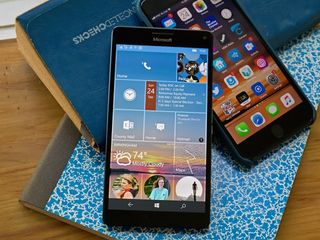
I'm delighted that I went back to Windows 10 Mobile these last few weeks. I've loved every minute of it. It's been great to experience that Start Screen and UWP apps on the go again, reminding me of what it would've been like had Microsoft been successful in its push for true universal apps. I still believe there is a future for universal apps on Windows because the proof is in the pudding. The good UWP apps work great on both PC and phones, including Microsoft To Do, Outlook Mail, Fitbit, myTube, Readit, and OneNote.
However, Microsoft's abandonment of Windows 10 Mobile is very apparent in 2018. When compared with Android and iOS, Windows 10 Mobile is just so slow and is starting to miss out on new features that other platforms are introducing. While I personally enjoyed my time back on the platform, I can't say it's an overall "enjoyable" experience anymore.
Weirdly, using Windows 10 Mobile in 2018 feels a little like digital detoxing. Apps are slower, and apps like Twitter don't even work with notifications anymore, meaning I'm much less inclined to pick up my phone and use it. So I was using my phone less, which felt pretty good actually.
Android and iOS are much better choices for me in 2018 than Windows 10 Mobile is, and that's to be expected. When I left Windows 10 Mobile in 2017, it was still basically on par with iOS and Android, but that's no longer the case in 2018. I'm going to be picking up the OnePlus 6T next week, with plans to make it my primary phone with all of Microsoft's Android apps onboard.
Windows 10 Mobile, it's been emotional. And it's time for me to say goodbye, for real this time. But I hope Microsoft returns to making mobile devices with Windows one day, and I'll be first in line if it does.
